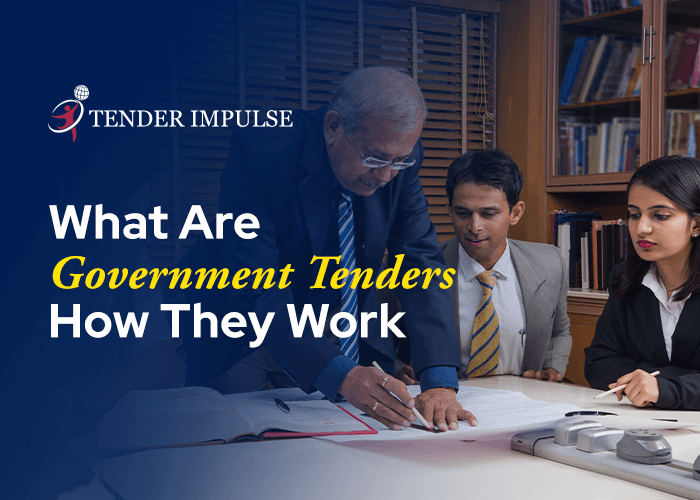- Phone: +91 9768157682 / +91 9987300609
- Email: info@tenderimpulse.com

Common Tender Errors: Time to Cease Them!
The topic of filling a tender is of immense importance to the business world as almost all bid managers find a perfect fit to understand the ingredients of a perfect tender response. It is important for bid managers and the response teams to ensure that their tender responses are in line with the expected requirements as set out by the authorities. To accomplish this, there is a need to understand the most common tender errors and the ways to eliminate them. Of course, there cannot exist a one size fits all approach but common errors in tender documents can be avoided so that the overall outcome is near to the requirements set out by the authorities. In this article, we explain the most common tender errors and the ways to eliminate them. Tender Errors
One of the foremost requirements of authorities is while evaluating the bids, they should have complete control over all aspects of the bid. For this to happen, bidders must ensure that they fill the bid in its entirety and even give away more information than is asked so as to ensure that the authorities have all the information at their disposal. The failure to provide all required documentation is the number one cause of tender failures and a lot of this has to do with negligence of reading the bid documents carefully. Bidders must confront with the authorities of any potential errors in tender documents that they feel could bar them from competing and create a comprehensive checklist of the requirements. Detailing of all aspects of the bid can go a long way in preventing erroneous bid document submission.
The second major fault in submitting a bid comes from non-compliance to the bidding requirements. For instance, if a bid requirement demands a previous experience of similar work in the past and the bidder is incapable of providing proof, then all the hard work that goes in other parts of the bid is vanished as they are incompatible for the bid. To overcome this, the bidders must ensure that they can comply with all the requirements as set out by the authorities. When there are cases of ambiguity, it is important to seek timely clarifications from the authorities. A good tip is to always consider the worst scenario in case the requirements are unclear. It is always a good practice to submit “more” than what is asked for so that authorities have all the necessary information and the bid is not rejected on grounds of lack of information.
The third notable thing to do while submitting a bid is to ensure that it is formatted in a readable manner. Submitting a poorly formatted or unprofessional-looking tender document with inconsistent formatting, spelling errors, or grammatical mistakes may lead to disqualification. A good practice is to Invest time in formatting the tender document to ensure a professional appearance and consistent layout. Use clear headings, bullet points, and subheadings to improve readability. Proofread the document carefully to correct spelling and grammar errors before submission.
Legal troubles too may pose a threat while submitting international tenders. Ignoring legal or contractual requirements, such as intellectual property rights, liability clauses, indemnification provisions, or compliance with applicable laws and regulations can prevent bidders from bidding for potential business. It is again necessary to look at all possible clauses in the bid document and find out potential errors in tender documents to prevent bidders from bidding successfully. A good practice would be to review the tender documents and contract terms carefully to identify and address any legal or contractual obligations. Seek legal advice if necessary to ensure compliance with all relevant laws and regulations. Clearly outline the bidder’s responsibilities and rights in the tender response wherever possible.
Finally, the most important aspect of any bid is its cost estimate. In fact, bids are very often prepared with the cost aspect being the single most effective criterion in selection. Providing inaccurate or unrealistic cost estimates, leading to cost overruns or underbidding may lead to possible rejection. Cost estimates do not necessarily be assumed as over the budget as sometimes authorities realize that a particular product/service has a set value and if bidders try to underbid that value it may lead to disqualification on presumed fraudulent conduct. The best solution is to Conduct thorough cost estimation and analysis to ensure that the proposed budget is accurate, realistic, and competitive. Take into account all relevant factors, including labor costs, materials, overheads, and contingencies. Provide detailed breakdowns and explanations of cost components to justify the proposed budget.
Other preparatory criterion include differentiating the bid from potential competitors, strategically planning the bid submission, protecting the data from outsiders and coordinating the bid within the entire team to put together all aspects in place. Developing a comprehensive tender strategy that outlines roles, responsibilities, timelines, and communication channels for all team members is crucial in preparing winning bids.
By addressing these common errors and implementing effective strategies to eliminate them, bidders can improve their chances of submitting successful tender proposals that stand out and meet the requirements of the procuring authority. For more information visit Tender Impulse.



